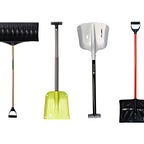The IA Toolchain #2 — Managing your product roadmap
See my first blog on the IA toolchain here
In IA we provide a product. The IIA says our product is .
“ an independent, objective assurance and consulting activity designed to add value and improve an organisation’s operations. It helps an organisation accomplish its objectives by bringing a systematic, disciplined approach to evaluate and improve the effectiveness of risk management, control, and governance processes.”
The key to this definition for me is the goal of helping an organisation achieve its objectives. To do this we need to have a strategy or plan for what we are going to actually do by answering the following
- What are the key objectives of our organisation?
- What are the risks to those objectives?
- What are we going to do to ‘evaluate and improve the effectiveness of risk management, control, and governance processes’ in relation to those risks?
Traditionally this has been a list of audits, an ‘Annual Audit Plan’ driven by an ‘Audit Universe’ (I have some thoughts on those as well if you are interested). I prefer to forget about these ideas and think of an ‘Audit Product Roadmap’
For a distinction between a ‘list of audits and a product roadmap a good illustration is found in a post on the StartUp Blog written by Cristina Meniuc
A traveler encounters three stone cutters on the street. When asked “What are you doing?”, the first man replies “I’m cutting stone”.
Still curious and confused, the traveler approaches the second man, who says “I’m cutting this stone into a rectangular shape so that it can fit into the wall”.
Starting to get an idea but still not fully sure what’s going on, the traveler approaches the third man who says “I’m building a cathedral”.
This parable is usually linked to leadership and the importance of always starting with the big picture first. But it’s also a great metaphor for product management, and for explaining why a strategic product roadmap is not the same thing as a product backlog.
That was a fun story
Think of annual audit plan presentation that you may have collated for presentation to Execs or the Board. Often we talk about the numbers of audits we are doing, which teams may be affected and sometimes flag some risks that we might focus on. By re-framing an audit plan from a list of audit projects to a product roadmap we align the activities of the team towards the wider strategic objectives and help the whole team understand the enterprise view of where the features (audits) they are working on fit into the product.
Lucky for us, product roadmaps are are very popular concept and there are host of companies providing tools that can slot into our internal audit toolchain to help provide the strategic overlay on all the work we are doing.
To test the idea I have used Asana ( I have thrown a few screenshots of ProductBoard in as well so you know I’m not biased) but there are loads of alternatives out there that can provide similar functionality. The main thing is that you find something that fits the way you want to work. Using something that is already in use in your organisation is going to make procurement discussions easier.
So a Step by step approach to build an audit roadmap could be
- Map Objectives
Asana lets you define your product ‘Goals’ these are the objectives that provide the framework to align all of the projects in your roadmap against. In an audit roadmap context I have used this to record the Company strategic goals and sub objectives in a hierarchy. Asana lets you assign further sub-objectives which could conceivably be used to map to a risk taxonomy and identify key risks to each objective
2. Build Portfolios
Asana Portfolios are logical groupings of projects that we can allocate directly to a goal or multiple goals. I have used them here as a container for a discrete team within an audit function, but they would equally fit a risk type portfolio or some other grouping
3. Manage Projects
A good product roadmap is integrated into the delivery management processes so we can easily see how well we are doing at delivering the initiatives on the roadmap. Tools like Asana include timelines and project phase breakdown functionality to allow us to plan activities and monitor our portfolio in realtime.
4. Bring in into the toolchain
The beauty of the many of the SaaS tools available is that they have built-in integrations. Add a project to Asana/Productboard and you can automatically open a linked Epic in your audit fieldwork Jira tool for the team to start work.
The key to the toolchain concept is integration. If we choose the best tool for the job that also integrates well with our other tools efficiency is increased and non-value adding admin work can be removed out of the process.
Soo..
The product roadmap is our high level view of what we need to do to achieve our objectives as an audit function and how we support organisational objectives. It can provide powerful way to discuss delivery progress and “Make Work Visible”. By linking our work to objectives and risks we can also better understand our overall opinion of the control environment and drive conversations with management and board stakeholders on where audit can add further value.
NEXT: Audit Fieldwork — The IA Toolchain #3 — IA, its Spreadsheets all the way down
